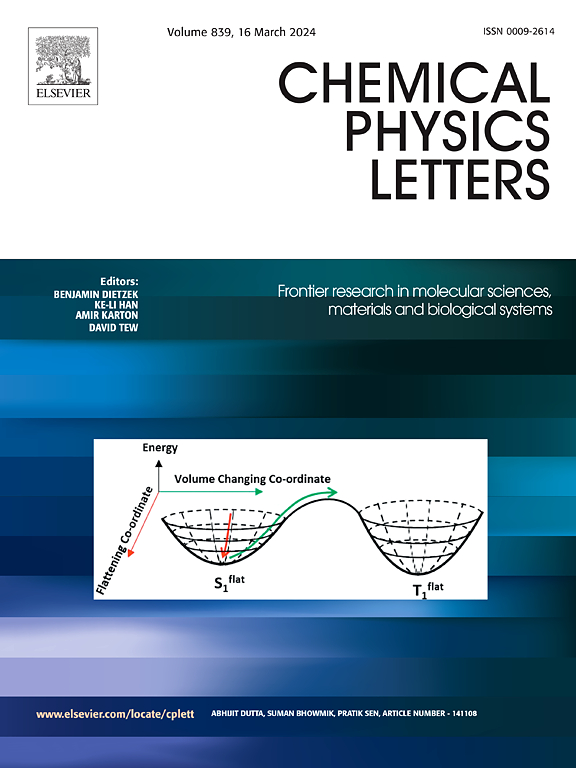New insights into the recognition and sensing mechanism of a CN– fluorescent probe: A theoretical study
IF 2.8
3区 化学
Q3 CHEMISTRY, PHYSICAL
引用次数: 0
Abstract
The recognition and sensing mechanism of the fluorescence probe AHAM for cyanide ions (CN–) detection have been investigated using density functional theory (DFT) and time-dependent density functional theory (TDDFT) methods. Through isomer calculations and boltzmann distribution analysis, we identified the reasonable structure for probe AHAM, which differs from the structure proposed in previous studies. We further confirmed that the reaction site between AHAM and CN– is the hydrogen atom in the NH2 unit, rather than the hydrogen atom in the OH unit. For the probe AHAM, the excited state results indicate that the single fluorescence emission is attributed to the excited state intramolecular proton transfer (ESIPT) process and AHAM-Keto emission. The experimentally observed weak fluorescence for AHAM is caused by the twisted intramolecular charge transfer (TICT) process of AHAM-Keto in the S1 state. Upon the addition of CN–, the solution exhibits turn-on fluorescence with the appearance of dual emission bands. Potential energy curves (PECs) calculations suggest that these dual emission bands correspond to emissions from AHAM-CN–-Enol and AHAM-CN–-Keto, respectively. The turn-on fluorescence is due to the inhibition of the TICT process. Moreover, we further investigated the ’off–on-off’ phenomenon observed during CN– detection when TFA is added. The binding energy results illustrate that the reverse mechanism is due to the higher affinity of TFA compared to AHAM for CN– detection.

求助全文
约1分钟内获得全文
求助全文
来源期刊

Chemical Physics Letters
化学-物理:原子、分子和化学物理
CiteScore
5.70
自引率
3.60%
发文量
798
审稿时长
33 days
期刊介绍:
Chemical Physics Letters has an open access mirror journal, Chemical Physics Letters: X, sharing the same aims and scope, editorial team, submission system and rigorous peer review.
Chemical Physics Letters publishes brief reports on molecules, interfaces, condensed phases, nanomaterials and nanostructures, polymers, biomolecular systems, and energy conversion and storage.
Criteria for publication are quality, urgency and impact. Further, experimental results reported in the journal have direct relevance for theory, and theoretical developments or non-routine computations relate directly to experiment. Manuscripts must satisfy these criteria and should not be minor extensions of previous work.
 求助内容:
求助内容: 应助结果提醒方式:
应助结果提醒方式:


